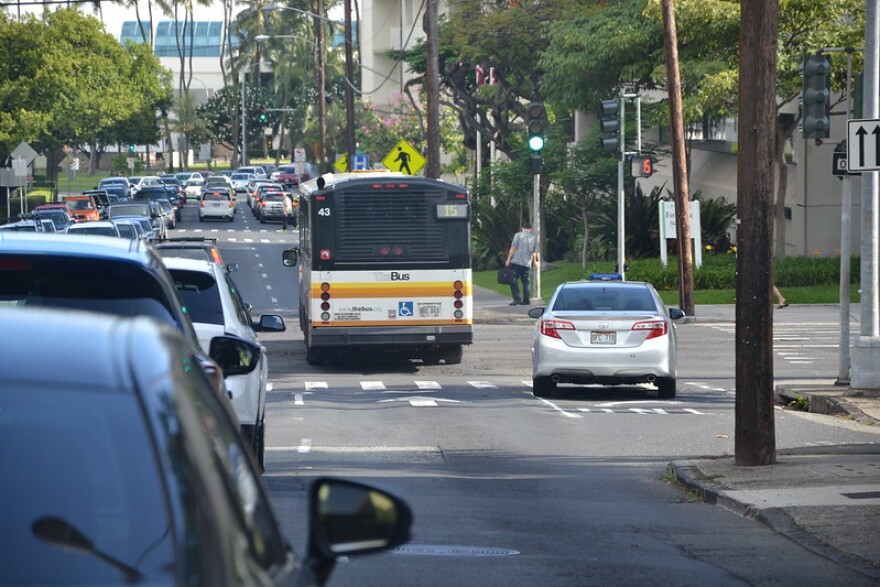A new report by the Hawai‘i Appleseed Center for Law and Economic Justice argues that the state would be better off without jaywalking laws.
“Generally there hasn't been any good research or data backing showing that there is a strong correlation between jaywalking laws and roadway safety,” said Abbey Seitz, Hawaiʻi Appleseed’s director for transportation equity and the author of the report.
Seitz analyzed thousands of jaywalking citations in the state and found that it issues them at a significantly higher rate than other locations where jaywalking studies have been conducted.
Hawaiʻi issues 349 jaywalking citations per 100,000 people every year, while Washington state issues just six. Jacksonville, Florida, and Sacramento, California, issue closer to 50 citations per 100,000 people annually.
Despite the high number of jaywalking citations in Hawaiʻi, pedestrian fatalities in the state grew by an average of 26% every year from 2009 to 2018.
Other areas around the U.S. have found similar results and are doing away with jaywalking rules. The report notes that some areas around the world with the fewest traffic fatalities — notably in Western Europe — have no jaywalking laws.
Pedestrian citations and deaths nationwide also reveal class and racial disparities. Data from other areas show that Black, low-income, elderly and disabled individuals are disproportionately affected by jaywalking citations.
In one example, a 2019 study found that 90% of jaywalking tickets issued in New York City were given to Black and Hispanic people, even though they make up just over half of the city’s population.
Though Hawaiʻi’s data is more limited, it appears to be the case locally.
At the same time, local law enforcement agencies paid officers an estimated $1.8 million between 2018 and 2023 to enforce jaywalking laws, but only about 22% of those fees were paid.
“Despite the heavy-handed approach to jaywalking enforcement in Hawaiʻi, these citations do not produce large sums of money for our local government,” the report says.
Sean Fitzsimmons, vice chair for O‘ahu’s Downtown-Chinatown Neighborhood Board, supported getting rid of jaywalking rules.
“I think, primarily, the main issue is the lack of a police force able to enforce the laws, and we need to use that very precious resource in a very efficient way. ... And I don't think spending countless hours issuing jaywalking citations would be the best expenditure of time,” he said.
Fitzsimmons’ neighborhood covers Hotel Street, which the Hawaiʻi Appleseed report found has the highest concentration of jaywalking tickets in the state.
In 2018 more than 1,300 tickets — about 16% of Oʻahu’s total that year — were issued on that street alone.
Seitz said road safety is better achieved through infrastructure changes.
“If we want to achieve roadway safety, that's done through infrastructure. … If you don't want cars and vehicles to hit each other, then you build infrastructure that separates the different roadway users, you slow down vehicles, you bring more visibility to pedestrians,” she said.
The 2022 Oʻahu Pedestrian Plan shows more than 900 miles of missing sidewalks on city streets that would cost $2.6 billion to install.
While there are big changes that can be made to improve pedestrian safety, Seitz said small changes like curb extensions and more visible road markings can bring big improvements, too.
This year Senate Bill 2630 is attempting to give pedestrians more freedom to walk through streets without being cited.
The bill will be heard in the House Committee on Transportation on Thursday.







